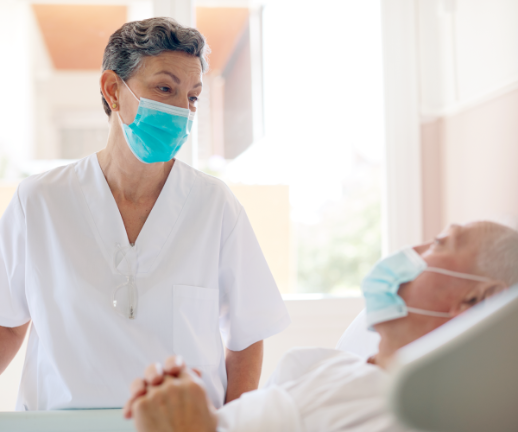St. Luke's Health joins CommonSpirit.org soon! Enjoy a seamless, patient-centered digital experience. Learn more
St. Luke's Health joins CommonSpirit.org soon! Enjoy a seamless, patient-centered digital experience. Learn more

Check In Online to Shorten Your Wait Time
When it comes to emergencies, every second counts. That's why families in Greater Houston trust St. Luke's Health Emergency Departments and Baylor St. Luke's Emergency Centers. These centers are home to board-certified emergency physicians, specially trained trauma nurses, and skilled health professionals available around the clock, seven days a week.
Check In Online to an Emergency Location Near You
Our online check-in feature minimizes your wait time at the ER and maximizes your time with our expert care team. If you are experiencing a life-threatening emergency, call 911 for immediate assistance.
Our hospitals' Emergency Departments attend to all emergencies—when minutes count— including heart attacks and strokes. Upon each patient's arrival, a triage process (to assess the degree of urgency) determines the order in which all patients are seen and the most efficient care plan.
Our community emergency centers provide a higher level of care than non-hospital affiliated clinics and urgent care centers. We refer and transport patients to Baylor St. Luke's Medical Center in the Texas Medical Center if a higher level of care is needed.
Our goal is to provide the best medical care as quickly as possible. Patients and their families take comfort in knowing that high-quality emergency care is available at all St. Luke's Health facilities.
When an emergency strikes, you can’t afford to make the wrong decisions. You need an ER that delivers high-quality care, is affiliated with a major hospital, and accepts major insurance plans.
What to expect at the ER
When you arrive at the emergency room, you can expect to be greeted by a triage nurse who will assess the severity of your condition. This initial evaluation helps prioritize patients based on the urgency of their medical needs. After triage, you'll be asked to provide personal and medical information, including symptoms and medical history. You can start this process early by downloading our ER patient form to bring in with you.
Once called back, a healthcare provider will conduct a thorough examination and may order diagnostic tests such as blood work, X-rays, or imaging scans to determine the cause of your symptoms. Depending on the findings, you may receive treatment in the ER, be admitted to the hospital for further care, or discharged with instructions for follow-up care.
Throughout your visit, the ER staff will keep you informed about your condition and treatment plan, addressing any concerns or questions you may have along the way. Remember that wait times can vary depending on the severity of other patients' conditions, so your patience is appreciated as the medical team works to provide timely and effective care.
You never know when an emergency might happen. All you can do is be prepared for one. Here, you can find numerous resources and step-by-step instructions for a variety of incidents, from fire safety to what to do when someone around you has a heart attack.
Frequently asked questions about emergency care
If you think you may be experiencing a life-threatening emergency, call 911 immediately. You can request that they take you to a St. Luke's Health emergency room.
While urgent care clinics and emergency rooms have similarities (they’re open 24/7 and accept walk-ins), they also have many differences. Emergency rooms can treat any condition that an urgent care facility can treat, but the reverse is not true. Emergency rooms tend to have more medical professionals on staff and have a greater range of capabilities. Patients at our emergency rooms also benefit from seamless admission to the nearest St. Luke's Health hospital, if necessary.
Emergency care is any type of medical service necessary for the prevention of death or severe harm to a patient.
If you experience any life-threatening symptoms, a trip to the emergency room is necessary. These include:
If you think you may be experiencing a life-threatening emergency, call 911 immediately. You can request that they take you to a St. Luke's Health emergency room.
Patients can go to the emergency room for any symptom, but it isn’t always the best option. For example, a patient could seek emergency care for the common cold. However, they may end up waiting for an extended amount of time, as emergency rooms prioritize patients with life-threatening conditions, even if they arrive later. If the condition is not life-threatening and you can reasonably wait for treatment, a virtual or in-person visit with a specialist may be a cheaper and more efficient option.
It is safe to go to the ER during the COVID-19 pandemic. We have implemented additional safety procedures, including mandatory mask-wearing, social distancing, and innovative cleaning techniques, to keep our patients as safe as possible. In fact, avoiding the emergency room due to the pandemic can be dangerous, as putting off care for a medical emergency can result in severe complications.